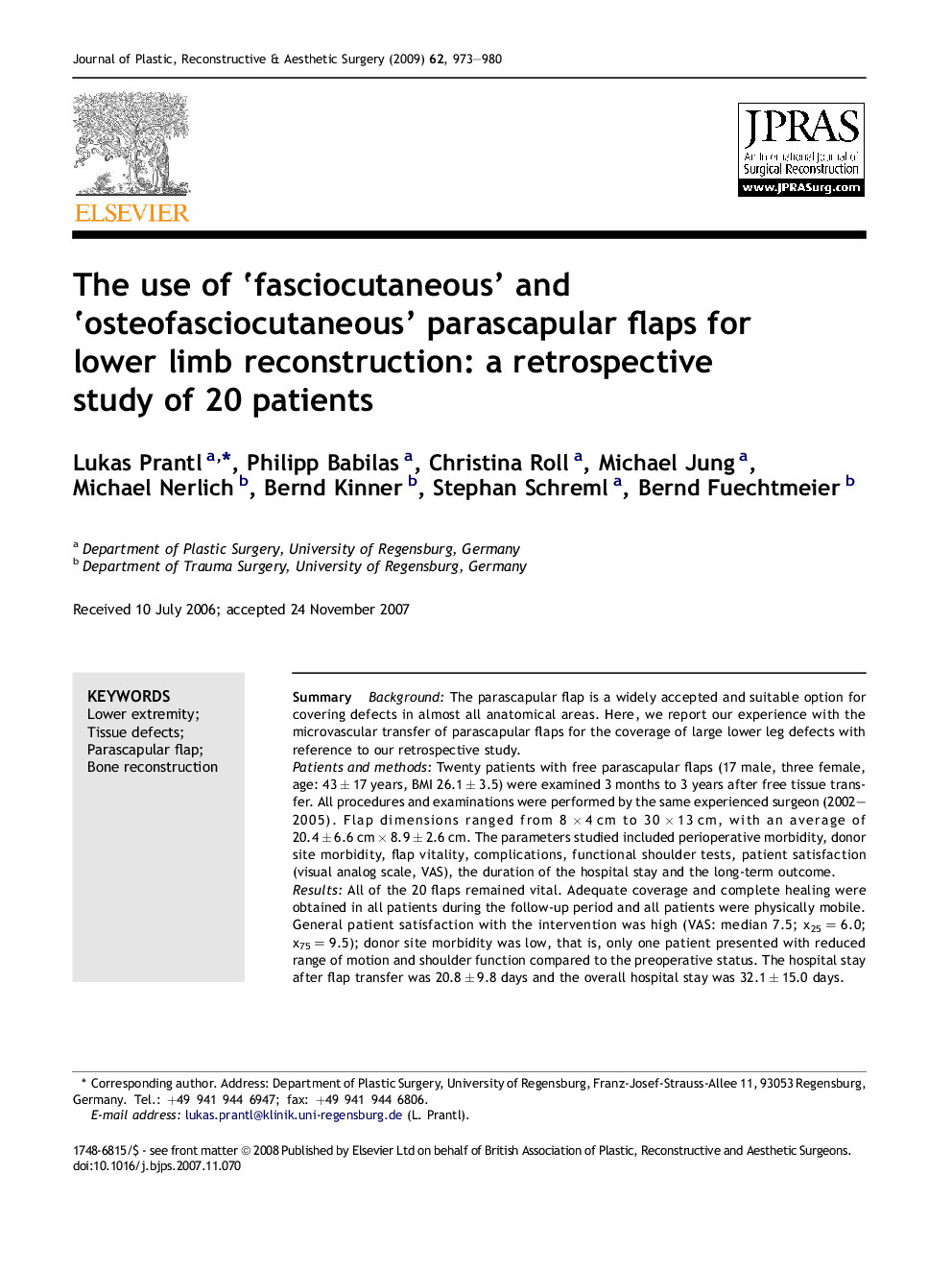| Article ID | Journal | Published Year | Pages | File Type |
|---|---|---|---|---|
| 4119784 | Journal of Plastic, Reconstructive & Aesthetic Surgery | 2009 | 8 Pages |
SummaryBackgroundThe parascapular flap is a widely accepted and suitable option for covering defects in almost all anatomical areas. Here, we report our experience with the microvascular transfer of parascapular flaps for the coverage of large lower leg defects with reference to our retrospective study.Patients and methodsTwenty patients with free parascapular flaps (17 male, three female, age: 43 ± 17 years, BMI 26.1 ± 3.5) were examined 3 months to 3 years after free tissue transfer. All procedures and examinations were performed by the same experienced surgeon (2002–2005). Flap dimensions ranged from 8 × 4 cm to 30 × 13 cm, with an average of 20.4 ± 6.6 cm × 8.9 ± 2.6 cm. The parameters studied included perioperative morbidity, donor site morbidity, flap vitality, complications, functional shoulder tests, patient satisfaction (visual analog scale, VAS), the duration of the hospital stay and the long-term outcome.ResultsAll of the 20 flaps remained vital. Adequate coverage and complete healing were obtained in all patients during the follow-up period and all patients were physically mobile. General patient satisfaction with the intervention was high (VAS: median 7.5; x25 = 6.0; x75 = 9.5); donor site morbidity was low, that is, only one patient presented with reduced range of motion and shoulder function compared to the preoperative status. The hospital stay after flap transfer was 20.8 ± 9.8 days and the overall hospital stay was 32.1 ± 15.0 days.ConclusionsOur study confirms that the parascapular flap is a very versatile and safe flap for lower limb reconstruction with low donor morbidity.
